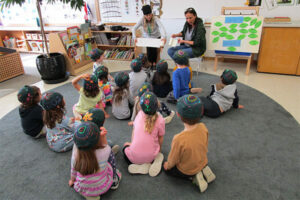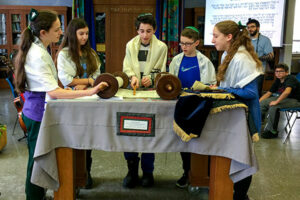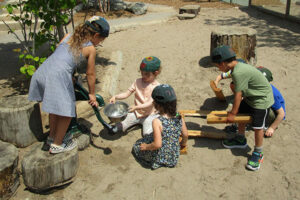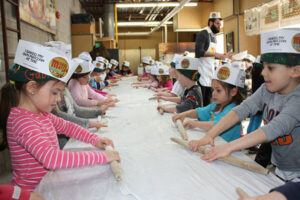Rabbi A.J. Heschel reminds us that Judaism is a religion of time, aimed at the sanctification of time. And so it behooves us as Jews—especially colonized as we are by the Monday, Tuesday, Wednesday, January, and February of Roman-Christian time—to keep a firm eye on the Jewish calendar, on the thin sliver of a moon that reminded us eight days ago that we had entered into the month of Adar Bet.
Adar is the last month of the Jewish year of months. Next month, Nissan, will mark the Rosh Hashanah of months, the Rosh Hashanah marked by the arrival of spring and the emergence of the people of Israel into our freedom from Mitzrayim. It is the Rosh Hashanah we feel in our bodies and as a unified people, distinct from the Rosh Hashanah of Chodesh Tishrei that we feel as individuals in the depths of our souls. Adar is the last month before this spring New Year and Adar Bet is the last of the last months.
The Talmud says: “Mishenichnas Adar Marbim Besimcha”/from the moment Adar enters, joy increases. I have always puzzled over this remark. Adar hardly seems like a joyous month. It comes at the tail end of the year, when we are weary and our energy is low after a long, dark winter. It contains the festival of Purim, one of the most unsettling of Jewish commemorations, despite our efforts to dress it up for our children.
The Purim story takes place in exile, where the Jewish people were most vulnerable to the whim and ill-will of powerful kings and their accomplices. Megillat Esther, read on Purim, is the only text in the whole Tanakh in which God’s name is not mentioned. God, who will be fully revealed and present at Pesach, remains at Purim fully hidden. Everything is topsy-turvy; it is “venahafochu”/unreliable, unclear.
At Adar, we may all justly feel the weight of the year on our bodies, hearts, and souls. Yet, “Mishenichnas Adar Marbim Besimcha”/from the moment Adar enters, joy increases—and this year is no different.
This week, we had our first taste of spring. Although Adar is a trickster, and we drift back and forth between sunshine and snow, our skin tingles with the anticipation of warm days ahead.
Here at Heschel, we have experienced two years of Adar-like uncertainty, with shifting ground and faces hidden behind masks, exiled from our true selves and restrained in our ability to reveal our full identities.
But hope for renewal is around the corner. Already we can feel a shift, a thaw, a light at the end of the tunnel. I read in a commentary that the Talmud calls Adar the most joyous of months not because the Jewish people experience success in Adar. Far from it. Instead, in Adar, despite the exile and challenges recounted in the Purim story, the Jewish people kept faith with the hidden God and this faith within struggle produced the greatest of joys.
Nissan follows Adar, and so following “venahafochu” of Purim, comes the seder and the order of Pesach. Already, we see the seeds of the seder planted within our school, and more good things are on the horizon.
Although the world around us may still feel topsy-turvy in the throes of Adar, beset by maniacal and irresponsible world leaders, we maintain with emunah shleimah—a full (and artful) trust that our good work with Jewish children and for Jewish education will keep us in good order in the days to come.
Shabbat Shalom,
Moreh Greg










